By Allyn Vannoy
Bradley could have been referring to German General Erwin Rommel. While Rommel was winning the war of desert armor tactics during 1941-1942 in the North African Campaign, he was losing the war of logistics.
With the fall of France in June 1940, Britain was the last active enemy of Nazi Germany. British forces in the Mediterranean and the Middle East faced a bleak and uncertain future. With Italy’s entry into the war a new front was opened that Britain hardly seemed able to defend.
Hitler, in a July 31, 1940, meeting with his generals, did not wholly oppose a possible Mediterranean strategy as Generals Walther von Brauchitsch, commander in chief of the Army, and Franz Halder, chief of staff in the Army high command (OKH) proposed sending panzer forces and aircraft to Libya to help the Italians, who were planning an offensive into Egypt. But Hitler wouldn’t agree to commit a panzer corps. The only thing in the Mediterranean that interested him was the possibility of capturing Gibraltar and thereby closing its western access to the British. (Get an in-depth look at WWII on all fronts, from the European Theater to the fighting in the South Pacific, inside WWII History magazine.)
To Nazi Germany, Winning the North African Campaign Was the Key to Defeating Britain
Kriegsmarine Grand Admiral Erich Raeder weighed in on the Mediterranean strategy during September 1940 as he showed Hitler, step by step, how Germany could defeat Britain without crossing the English Channel and maintained that doing so would put Germany in a commanding position against the Soviet Union as well.
Raeder argued that the Axis should capture the Suez Canal and then advance through Palestine and Syria as far as Turkey. “If we reach that point, Turkey will be in our power,” Raeder emphasized. “The Russian problem will then appear in a different light. It is doubtful whether an advance against Russia from the north (Poland and Romania) will be necessary.”
An advance on the southern frontier of Turkey would place the Turks in an impossible position. With Hungary, Romania, and Bulgaria already allied to Germany, Turkey would be forced to join the Axis or at least to provide passage for Axis forces and supplies.
Even Churchill recognized the situation in a message to President Roosevelt, asserting that if Egypt and the Middle East were lost, continuation of the war “would be a hard, long, and a bleak proposition,” even if the United States was to enter the war. Many now cite this is the main significance of WWII’s North African Campaign.
However, although OKH and OKW advised Hitler to send troops to North Africa, their proposals lacked Raeder’s urgency. Hitler was fixed on destroying the Soviet Union and gaining Lebensraum (living space) in the east.
An Axis victory in the Middle East could place German forces in Iran, blocking supplies to the Soviet Union from Britain and the United States. Russia would be left with only Murmansk and Archangel in the north—ports exposed to Arctic weather, U-boats, and the Luftwaffe. Even more than that, the Soviet Union’s major oil fields in the Caucasus and the Caspian Sea could be threatened. A German position in Iran would also pose a threat to British India.
But opening the road to the Middle East depended on achieving victory in North Africa. And the outcome in North Africa was dependent on logistics. In time Axis operations in Libya would expose several key issues.
Deciding Whether to Support the Italians
Hitler’s ambivalence about sending forces to the North African Campaign was based on faith that the Italian offensive into Egypt would achieve a quick success. It had commenced on September 13, 1940, as the six divisions of the Italian Tenth Army, which was about three times the size of the defending British force, crossed into Egypt. But German fears, and British optimism, began to increase almost at once. Fifty miles inside Egypt, the Italian Army came to a halt at Sidi Barrani and dug-in. For weeks the Italians did nothing while the British received reinforcements.
German military leaders had long harbored doubts about the ability of the Italian army given its obsolete equipment and few mechanized forces. However, the German General Staff felt the principal deficiency was its poor leadership—the Italian officer corps being ill trained.
Consequently, the Germans offered panzers and aircraft, but Mussolini didn’t respond. He kept hoping that his army would show some drive, push the British back, and give him and Italy some measure of glory. But it failed to happen. Even so, Mussolini was reluctant to call upon the Germans because it would look like an admission of failure, but he also didn’t want to lose Libya.
With the Italian Army at Sidi Barrani in October 1940, the German high command sent a panzer expert, General Wilhelm von Thoma, to find out whether German forces should help the Italians—and also, unofficially, to look over the Italian Army. Von Thoma was a veteran who had led German-created panzer forces for Franco during the Spanish Civil War, seeing action in 192 engagements while in Spain
After returning from Libya, von Thoma was called to Hitler’s headquarters. Von Thoma reported that only motorized forces were of any use in the desert. He believed that to ensure success, “nothing less than four panzer divisions would suffice,” and that this was also “the maximum that could be effectively maintained with supplies in an advance across the desert to the Nile Valley.” This small force would have to be of the highest quality (meaning not Italians). Hitler told von Thoma he could spare only one panzer division (the 15th Panzer), whereupon von Thoma replied that it would be better to give up the whole idea. Von Thoma’s comment angered Hitler, saying that his concept of sending German forces to Africa was political, designed to keep Mussolini from changing sides. Hitler remained fixed on Russia, hoarding his panzer forces to use there.
The German Army had developed a single-minded concentration on the operational aspects of war to the detriment, if not outright neglect, of everything else. The Army’s doctrine, training, and organization were geared to fighting and little else. Before 1939, no preparations had been made in the German Army for desert warfare. Operations, organization, and training had been limited to fighting a war on the European continent.
The Budding Axis Logistical Crisis
During December 1940, British General Richard O’Connor’s Western Desert Force attacked the Italian forces at Sidi Barrani. By mid-February, the British overran eastern Libya, destroying the Italian Army, capturing 130,000 prisoners. Rather than pushing on to Tripoli the British dispatched forces to Greece and others to finish off Italian forces in East Africa.
The British success forced Hitler to come to Mussolini’s aid. In January 1941, Luftwaffe units arrived in Sicily and began air attacks on British bases on Malta. In the middle of the Mediterranean, Malta provided a vital strategic base for Allied operations as it lay astride the direct route between Italy and Libya. The air assault allowed General Erwin Rommel’s Afrika Korps to reach Libya with few losses.
When the first German units were shipped to Africa, they had no information on the nature of operations and circumstances in the desert. Information furnished by the Italians was extremely meager. One of the key features of Libya was a lone, all-weather (hard surfaced) road, the Via Balbia, which ran from the provincial capital, Tripoli, to the Egyptian frontier, where it met a British military road leading to Alexandria, the Suez Canal, and on to Palestine.
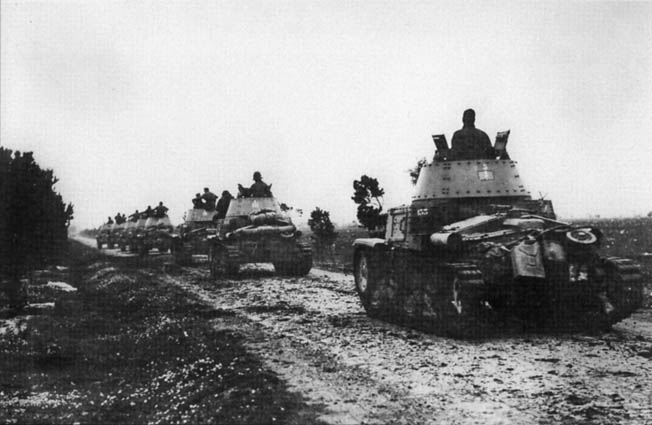
The logistics problems facing the Germans in North Africa were to be extremely challenging. The primary Italian ports for shipping and embarkation to Libya were Naples, Bari, Brindisi, and Taranto. The main port in Libya was Tripoli, capable of handling five cargo ships or four troop transports at a time, or approximately 45,000 tons of cargo a month across its docks.
Although the Italians tried to improve their Libyan ports, they did so only after wasting considerable effort on repairing harbors in Albania. The small capacity of the ports also limited the size of convoys. Instead of running a relatively few large convoys, which would have been more efficient in terms of convoy defense, the Italians had to send many small ones, wasting fuel and escorts.
The Italians initially used massive escorts, including cruisers, but they were eventually forced to curtail this due to fuel shortages. Initial convoys averaged just four merchant ships with nearly as many destroyers or torpedo boats acting as escorts and at least one aircraft patrolling ahead of a convoy during daylight. Later, air cover for the convoys was greatly increased as the Italian air force made a major commitment. In time the Italian convoys were reduced in size, averaging just two ships, and becoming smaller in size as the British gradually eliminated the larger ones.
Routing and scheduling of convoys for Libya was often complex. Initially the Italians tried to sail on moonless nights. Later, the threat of attack at night was far greater than during the day, so running during daylight became preferable. The Italians were forced to make costly efforts to stay as far away as possible from Malta. As a result convoys had to either sail to the west along the Tunisian coast or far to the east, not far off the Balkan coast. Such routing doubled the travel distance across the Mediterranean, making it expensive in terms of time and fuel as well as the wear on ships.
Italian shipping resources were further taxed as ships were also needed to support troops in the Balkans and the Aegean.
In terms of logistics, a German motorized division required 350 tons of supplies a day or 10,500 tons a month. To transport this quantity over 300 miles of desert, OKH calculated that, apart from the troops’ organic vehicles and excluding any reserves, would require 39 columns or ground convoys each of 30 two-ton trucks, running four or five round trips a month.
The assignment of the 15th Panzer Division to the Deutsches Afrika Korps (DAK) raised the motor-transport capacity needed to maintain the DAK by 6,600 tons. This was 10 times as much, proportionally, as that allocated to the armies preparing to invade Russia. Whether Rommel received more reinforcements or went beyond the 300-mile supply range, a shortage of support vehicles was bound to ensue. Nor was there sufficient coastal shipping to help alleviate the problem. Hitler relented, however. While granting Rommel the trucks he needed, Hitler coupled them with an explicit order forbidding him from taking any large-scale offensive action that would further raise his requirements.
The force of seven Axis divisions in Libya, along with the supporting air force and naval units, required a supply level of 70,000 tons per month. This was significantly more than Tripoli could handle, so a crisis was sure to develop.
Rommel’s First Offensive: A Logistical Nightmare
Rommel then defied Hitler’s orders and launched an offensive at the beginning of April. Limited initially, it found weaknesses in the Commonwealth forces and as Rommel exploited those weaknesses it gained momentum. The drive ended at Sollum, just over the Egyptian border, creating a logistical nightmare for the Axis, as it added 700 miles to an already extended line of supply.
While the British Army was having problems, the Royal Navy responded. After sinking 10 Axis ships during the first three months of 1941, they sank 26 in April and May. In one incident on April 16, four destroyers, operating from Malta, destroyed a convoy of five transports and two escorts at the cost of a single destroyer.
Despite problems, May 1941 was a peak month for shipments, no more than nine percent of the supplies embarked were lost en route to Africa. Somehow the Axis managed to put more supplies through Tripoli than its capacity. From February to May, the Axis received 325,000 tons of supplies, 45,000 more than the Army’s consumption. But the problem became one of moving supplies from Tripoli to the front. As a result, supplies piled up on the wharves while shortages arose on the front line. At the same time the Italian ground forces were experiencing difficulties because its 225,000 man force had only 7,000 trucks to support it.
On April 4, the Axis reoccupied the port of Benghazi, in Cyrenaica, only 300 miles from the Egyptian border. Though designed to handle 2,700 tons a day, the port’s actual unloading capacity was 700 to 800 tons a day, or 24,000 tons a month. There was also only enough coastal shipping available to carry 15,000 tons a month from Tripoli. As a result, supplies continued to pile up at Tripoli.
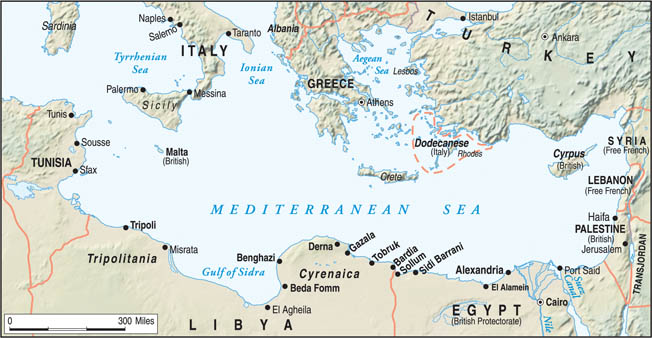
By his daring, yet tempestuous offensive, Rommel had placed his forces in an impossible position. With Benghazi’s capacity limited, to stay where he was in eastern Libya spelled a pending disaster. Yet, retreat was also not a consideration. The only option was to try to take the port of Tobruk. However, Rommel had to concede that the force needed for such an operation would be no less than four panzer or motorized divisions—the same number originally suggested by von Thoma. But Germany’s forces were already fully committed against Russia. Also, to grant Rommel’s request meant that DAK would need another 20,000 tons of supplies a month, for which unloading facilities were not available. Rommel would have to do with the forces and supplies on hand. As consolation, on July 31, all Axis forces in Libya, renamed Panzerarmee Afrika, were placed under Rommel’s command.
Closer examination of Tobruk revealed that it could provide little help in terms of logistics relief. The port was reported as capable of handling 1,500 tons a day, but in practice it rarely exceeded 600. The German Kriegsmarine had dismissed it as a port of disembarkation for large ships, advising OKH to rely exclusively on Tripoli and Benghazi to keep Rommel’s forces supplied. Thus, any plans Rommel had for solving his supply difficulties by capturing Tobruk seemed highly impracticable.
Losses in the Mediterranean
In the meantime, the situation on the central Mediterranean was deteriorating. Early in June most of the German 10th Air Corps, which had been protecting Libyan-bound convoys from bases on Sicily, was transferred to Greece. This allowed British naval and air units on Malta a respite to make a gradual recovery. Axis losses at sea, which had previously been negligible, began to rise alarmingly. In July, 19 percent of all supplies, by weight, sent to Libya were lost; this fell to nine percent in August, rose to 25 percent in September, and 23 percent in October. In addition, Benghazi suffered heavy bombing by the RAF in September, causing ships to be diverted to Tripoli.
At the same time Allied submarines achieved some spectacular successes, sinking three of Italy’s largest troop transports—the liners Esperia, Neptunia, and Oceania in August and September 1941. From mid-October 1941, the Italians began carrying troops almost exclusively in destroyers. Submarines remained the chief killer of Axis shipping during 1941, causing 44 percent of Axis losses.
But Rommel’s logistics woes lay not just with British aggressive efforts, but also with the organization responsible for transporting his supplies. The leadership of the Italian Navy, responsible for coordinating and overseeing Mediterranean convoy protection, was staffed by many officers who were not supporters of Mussolini, while the senior Fascist authorities in the government and military were so corrupt as to be ineffective, or at least disastrously bureaucratic.
Rommel accused the Commando Supremo of inefficiency, demanding that the entire supply organization be taken over by the Wehrmacht. The Kriegsmarine agreed, voicing the suspicion that the Italian preference for the use of Tripoli was based primarily on their desire to protect their merchant fleet. But these opinions were disputed by OKH in a study showing that the Luftwaffe had neglected the protection of the convoys in favor of attacking targets in the eastern Mediterranean.
Other logistic options were weighed. The possibility of sending supplies from Greece direct to Cyrenaica was considered, but this would have placed dependence on a single-track railway from Belgrade to Nish in Yugoslavia, which was constantly being broken, i.e., blown up by partisans. On their side, the Italians argued that continued use of Tripoli was needed, claiming that they had no fuel to enable their navy to deal with the Malta-based British “Force K’s” destroyers and submarines, and demanded that the Luftwaffe tackle the job. However, when OKW offered them Kriegsmarine personnel to help operate the Libyan ports, the offer was rejected.
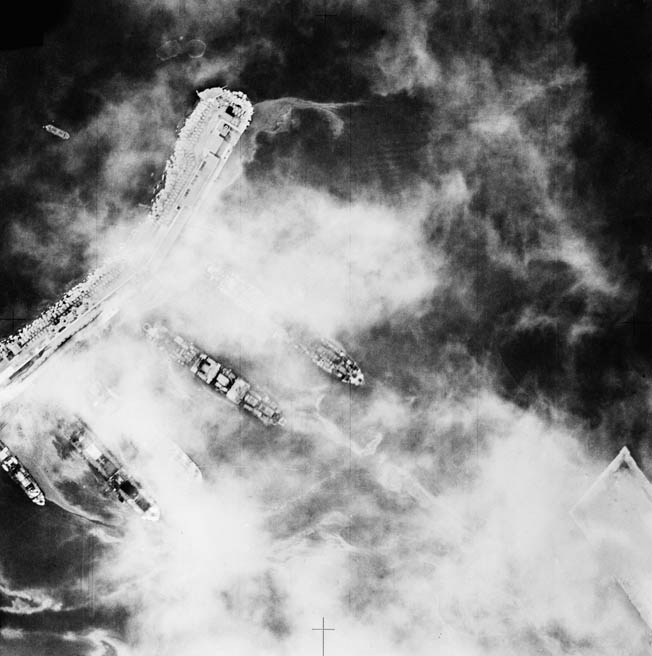
The Cost of Rommel’s Supply Lines
Despite shipping losses the Italians succeeded in putting an average of 72,000 tons, slightly more than Rommel’s current consumption, across the Mediterranean each month during July through October. Rommel’s difficulties, for the moment, stemmed less from the threat posed by Malta and problems with Mediterranean convoys than from the impossible length of his supply lines.
If the Panzerarmee needed 70,000 tons of supplies a month and 70,000 tons were received at ports, at least one-third of the tonnage or 23, 000 tons, had to be fuel to facilitate ground operations. Since one-third to one-half of the fuel received at port was used to transport these supplies, approximately 11,500 tons would be consumed delivering the goods. That would leave 47,000 tons of other supplies (food and ammunition) but result in a shortage of 11,500 tons of operating fuel. The alternative was to offset the fuel shortfall and cut other supplies to just 35,500 tons. Whatever way you cut it, the numbers were eventually going to come up short.
Also, obligated to cover 1,000 miles each way, 35 percent of transport vehicles would be undergoing repair at any given time.
On the night of November 9, a five-ship convoy carrying 20,000 tons of cargo was sunk off the Libyan coast by British warships. Supplies disembarked in Libya during the month dropped to 30,000 tons while shipping losses rose to 30 percent. However, though Rommel’s main fighting force consisted of two German divisions, which together consumed about 20,000 tons a month, they still had some supply surplus available from the previous months. But this was of less immediate significance than the fact that the British offensive that opened on November 18 (Operation Crusader) made the overland routes unsafe. British aircraft and armored cars, operating in raiding parties, inflicted heavy losses on truck columns, also reducing hauling capacity by half while also limiting the movement of truck convoys to nighttime hours.
As Rommel retreated across eastern Libya during November-December. the Italians made an all-out effort to provide relief. Having materially assisted his retreat by using warships and submarines to bring fuel to the ports of Derna and Benghazi, they next made a major effort by sending four battleships, three light cruisers, and 20 destroyers to escort a convoy to Libya on December 16-17. The operation was a success, the Italian fleet suffering only one battleship damaged.
Meanwhile, the German quartermaster believed that the situation was improving. Since only 39,000 tons managed to get across the Mediterranean during December, it was clear that the improvement had little to do with increased safety of the sea-routes. Rather, it resulted from the discovery of 13,000 tons of Italian fuel reserves near Tripoli. Even more important, Rommel’s retreat to El Agheila had reduced his lines of supply to a manageable 460 miles. The arrival on January 6, 1942, of a second “battleship convoy” with six vessels carrying supplies eased the situation further.
Hitler’s Options in the North African Campaign
As the winter of 1941-1942 approached, much of the German Luftflotte 2 had been transferred from the Ostfront to the Mediterranean. Luftflotte 2 began attacking Malta, reducing Axis shipping losses. As a result, new panzer units and replacement tanks were able to reach Rommel.
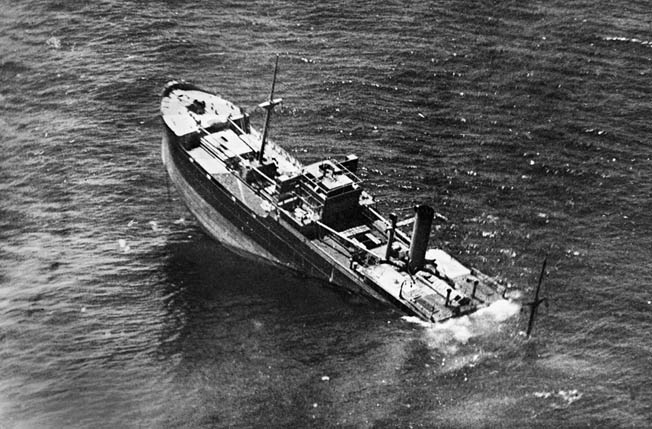
While reinforcements raised Rommel’s strength to 10 divisions—three German and seven Italian—and accordingly increased his supply requirements to 100,000 tons, he was in fact receiving an average of only 60,000 tons during February to May 1942. This was less than received during the difficult days of June-October 1941, and yet it enabled Rommel, first to take the offensive and then to prepare another and even more spectacular advance.
The demand for 100,000 tons a month was somewhat exaggerated; while it corresponded to the needs of 10 full-strength German divisions, the actual forces under Rommel were much smaller, given that his units were understrength and mostly Italian. Panzerarmee was also able to maintain itself at 900 miles from Tripoli because Benghazi, which had contributed little during the previous offensive, was now operating at full capacity. As a result, the distance to be covered by some one-third of his supplies was reduced to just 280 miles.
Logistics now dictated battlefield options. One course of action was for Rommel to stay where he was while preparations were made to capture Malta. Assuming that fuel could be found for the Italian Navy, and given the continued maintenance of the capacity of the port of Benghazi, this would have enabled Rommel to hold out for some time and to prepare a large-scale attack on Egypt.
By the first week of February 1942, the British had dug in on a line at Gazala, west of Tobruk, so Rommel halted Axis operations as well and took personal leave. Back in Berlin, he tried to persuade Hitler to let him have three more panzer divisions, but Hitler was focused on the Ostfront and agreed only to Operation Herakles (Hercules), the invasion of Malta. However, Hitler did not truly favor the operation, given the airborne losses suffered on Crete in 1941 and concerns about the quality of Italian naval support. But Malta was being sufficiently suppressed for the moment so that Axis forces in Libya were now well supplied.
During the first half of 1942, only six percent of the supplies dispatched were lost en route to Libya, thus supply problems were greatly eased in April and May. However, Rommel, fearing a British offensive before Malta was taken, decided to return to Africa and push forward with his own plans. If he succeeded in taking Tobruk, he would then wait until Malta was subdued before advancing into Egypt.
It is questionable whether an advance on Alexandria would have been practicable. Even if Hitler had the additional panzer forces available, bringing them to Africa would have increased Panzerarmee’s support requirements to a point beyond the combined capacity of Benghazi and Tripoli to support operations. This in turn would have made the accumulation of stores for an attack a hopeless task, while the number of vehicles required to transport stores was beyond the limited resources of the Wehrmacht. Perhaps the only way to solve the problem would have been to rid Panzerarmee of its hapless Italian ground forces as von Thoma had recommended in October 1940, but this was not a politically viable option.
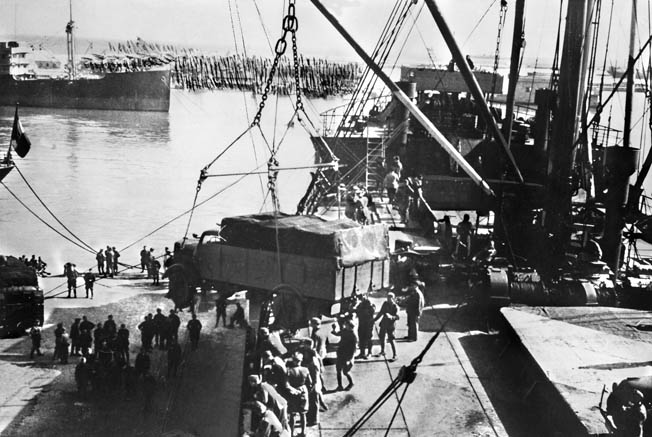
As an alternative to the Axis logistics system, the nature of desert operations required the establishment of large supply dumps close behind the front, and a penetrating attack had a chance of capturing the supplies necessary to continue an advance. Thus Rommel would be able to pursue the British using captured fuel transported in captured trucks. But planning for this was a gamble.
Little Gained From Tobruk
On May 26, Rommel opened his offensive. On June 22, he captured Tobruk with its port facilities intact. But the Axis was, in reality, in a doubtful condition to exploit this success. Though shipping losses in June had risen little, as compared with May, the lack of fuel for the Navy caused the tonnage plying the route to Africa to fall by two-thirds, supplies disembarked dropping to 32,000 tons. The fuel shortage, moreover, forced the unloading of even this small amount not at Benghazi, but at Tripoli. This made the Axis situation desperate. Unable to stay in place, they could either fall back or “flee forward” in the hope of living off the enemy.
Rommel thought it was best to strike into Egypt immediately while the British were disorganized. On the other hand, Rommel’s superior, Field Marshal Albert Kesselring, commander in chief of all German forces in the south, favored an attack on Malta first, but Rommel went over Kesselring’s head and appealed directly to Hitler. Claiming that the supplies captured at Tobruk would carry him to the Nile, Rommel was determined to go on, and Hitler, who had never been keen on the Malta operation, supported him. At the same time, he was promised adequate supplies by the Italians.
So Axis hopes hung on 2,000 vehicles, 5,000 tons of supplies, and 1,000 tons of fuel captured at Tobruk. After an advance of another 400 miles the Panzerarmee came to a halt on July 4 at El Alamein. Also, only six percent of the Axis supplies had been lost en route to Africa in July, giving Rommel enough to keep his forces sufficiently supplied. A renewed air offensive against Malta in July failed, however, and British subs returned to the island.
The distance from El Alamein to Axis ports made itself felt. Of the 100,000 tons of supplies needed each month, Tobruk, hundreds of miles behind the front, could barely handle 20,000. Trucks were in short supply and attempts to use the British railway from Sollum, eastward, only provided 300 tons per day instead of the 1,500 tons that had been planned. The port and the sea routes were also open to air attack. Sending ships to Tobruk or the smaller ports of Bardia and Mersa Matruh was impossibly difficult. Unloading at Benghazi or Tripoli, 800 and 1,300 miles behind the front, respectively, involved a huge expenditure of fuel and extended delays. In July, the Italians continued to opt for unloading at Benghazi and Tripoli, with the result that, although only five percent of their shipping was lost and 91,000 tons were put across the Mediterranean, it took weeks for the supplies to reach the front line. When Rommel insisted that ships be sent directly to Tobruk in August, 1942, losses rose fourfold and the quantity of supplies put across dropped to 51,000 tons.
Allied bombing of Libyan ports was increasingly effective, nullifying any advantages the Axis had gained from taking Tobruk. British Wellingtons and American B-24s bombed Benghazi and Tobruk nightly. The RAF destroyed the fuel storage depot at Tobruk in July. On August 6, a particularly effective attack reduced the port capacity at Tobruk from 2,000 to 600 tons; the port never handled more than 1,000 tons of cargo afterward. On the night of September 22-23, having learned of the arrival of the freighter Apnania at Benghazi with tanks and ammunition, the Allies mounted a particularly effective air attack that destroyed the freighter and seriously damaging the port.
Sinking Rommel’s Fuel
With or without Malta in Axis control, during midsummer many ships going to Tripoli and Benghazi got through, while those sent to Tobruk came under heavy bombing. Although he had only 8,000 out of the 30,000 tons of fuel he claimed he needed for August, Rommel decided to stake everything on a final attempt to break through British lines. He was supported by Kesselring, who promised more tankers for Tobruk. When these were sunk he said he would fly in 500 tons of fuel a day, but the planes failed to arrive.
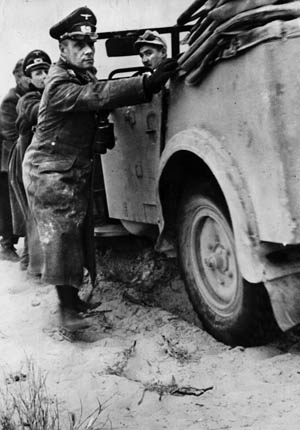
The British only managed to sink a dozen ships from late June through July. In the first half of August, they only sank three ships—all by submarine attacks. But on August 21, things began to change as British Beauforts hit the large tanker Pozarica, carrying fuel for the Italian Army, forcing her to beach on the island of Corfu. On August 26, Ultra interceptions disclosed a plan to sail no less than 20 ships between August 25 and September 5. At least 16 of these ships were either tankers or were carrying barrels of fuel. Thanks British efforts, only seven reached Libya with very little fuel. As a result, in August, a third of all Rommel’s supplies and 41 percent of his fuel had been lost en route to Libya.
The August attacks on Rommel’s fuel supplies left the Panzerarmee with a mere 10 percent of the minimum requirement for effective operations. Ten thousand tons were stuck in Tobruk, unable to be brought forward. The supply of ammunition, spares, and food was also disrupted, demoralizing the Italians. But German reinforcements began to arrive, formations that had been earmarked for the aborted attack on Malta—Ramcke’s Parachute Brigade and the 164th Light. However, these had no transport and proved more of a burden than a help in the desert.
The Allied air force was concentrating on disrupting Rommel’s fragile and elongated supply routes while British mobile forces were causing havoc in the Axis rear areas. Rommel could hardly afford these losses. He would later blame the failure to break through to the Nile on how the sources of supply to his army had dried up. He complained bitterly about the failure of important Italian convoys to deliver desperately needed tanks and supplies—always blaming the Italian Supreme Command.
There was a question of whether the reverses inflicted on Rommel during the summer and autumn of 1942 were due to the nonarrival of fuel from Italy or to the fortuitous sinking of a disproportionately large number of vitally important tankers.
No fuel reached Libya in the first week of October. The cargo ship Francesco Barbaro, en route to Benghazi via Greece, was torpedoed. The Unione, carrying fuel in the same convoy, was also torpedoed. Four days later, the fuel-carrying Nino Bixio was sunk by a torpedo-bomber.
In the Second Battle of El Alamein, October 23-November 4, 1942, the British Eighth Army broke the back of Rommel’s Panzerarmee and began a long advance that would eventually take them all the way to Tunisia.
The Axis political situation necessitated supporting what was considered a less than useful force—the Italians. In terms of the larger picture, it seemed that, for all Rommel’s tactical brilliance, the problem of supplying an Axis ground force for an advance to the Middle East was virtually insoluble.
Rommel’s Great Mistake in North Africa
Rommel’s supply difficulties were in part due to the limited capacity of the Libyan ports, which not only determined the largest possible number of troops that could be maintained and the force mix, but also restricted the size of convoys, making escorting them expensive in terms of fuel and the warships employed. Once ashore the logisticians were faced with distances that were out of proportion to those the Wehrmacht encountered in Europe, including Russia, along with an insufficient number of trucks. While coastal shipping was employed, given the RAF’s domination of the skies, its effect was limited. Given this, only a railway might have helped to solve the overland problem. The Italians, however, never mobilized resources for this purpose. Finally, the Axis decision in the summer of 1942 not to occupy Malta had far less to do with the outcome of the struggle in North Africa than the fact that the port of Tobruk was too small and exposed to attacks by the RAF.
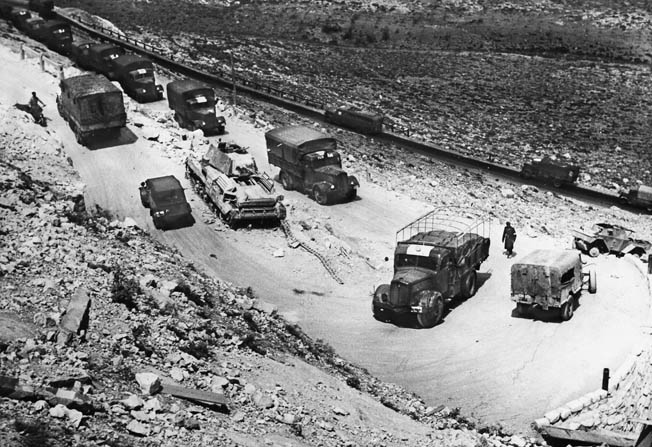
Under such circumstances, Hitler’s original decision to send a force to defend a limited area in North Africa seemed correct. Rommel’s repeated defiance of his orders and attempts to advance beyond a reasonable distance from his base, however, were mistakes and should never have been allowed to happen.
Rommel was not unaware of the logistics situation he faced. The Rommel Papers state, “The first essential condition for an army to be able to stand the stress of battle is an adequate stock of weapons, petrol and ammunition. In fact, the battle is fought and decided by the quartermasters before the shooting begins.” But he was forced to rely on either the Italian Commando Supremo or Kesselring to transport his supplies across the Mediterranean.
There seemed little that the Axis could do to rectify the problem. The few options available included expansion of the port facilities at Tripoli and Benghazi, the capture of Malta, or the building of a railway from Tripoli east 600 to 900 miles.
The situation in the Libyan desert was best summed up by German General Johann von Ravenstein, commander of the 21st Panzer Division, who described it as a tactician’s paradise but a quartermaster’s hell.
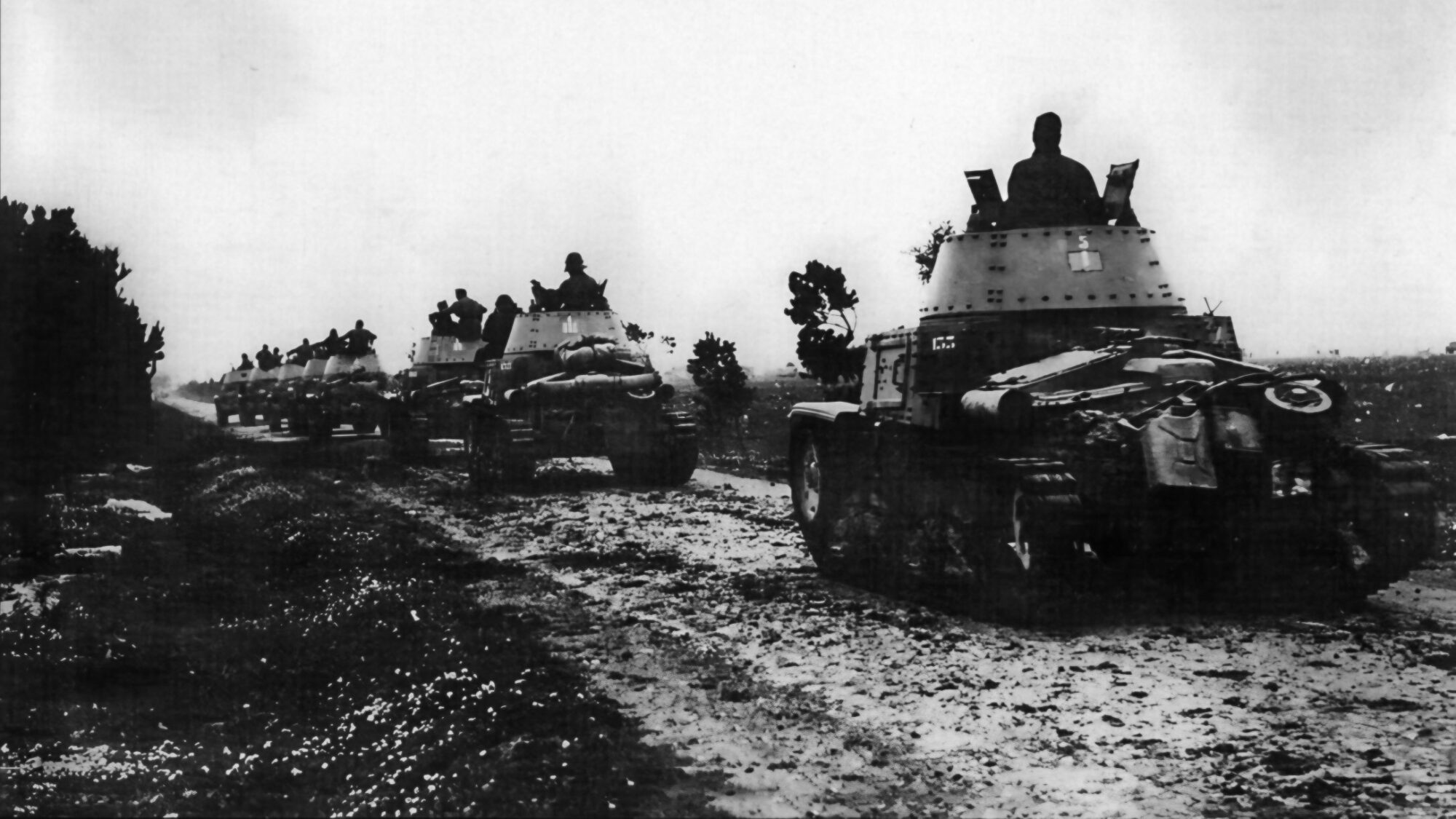
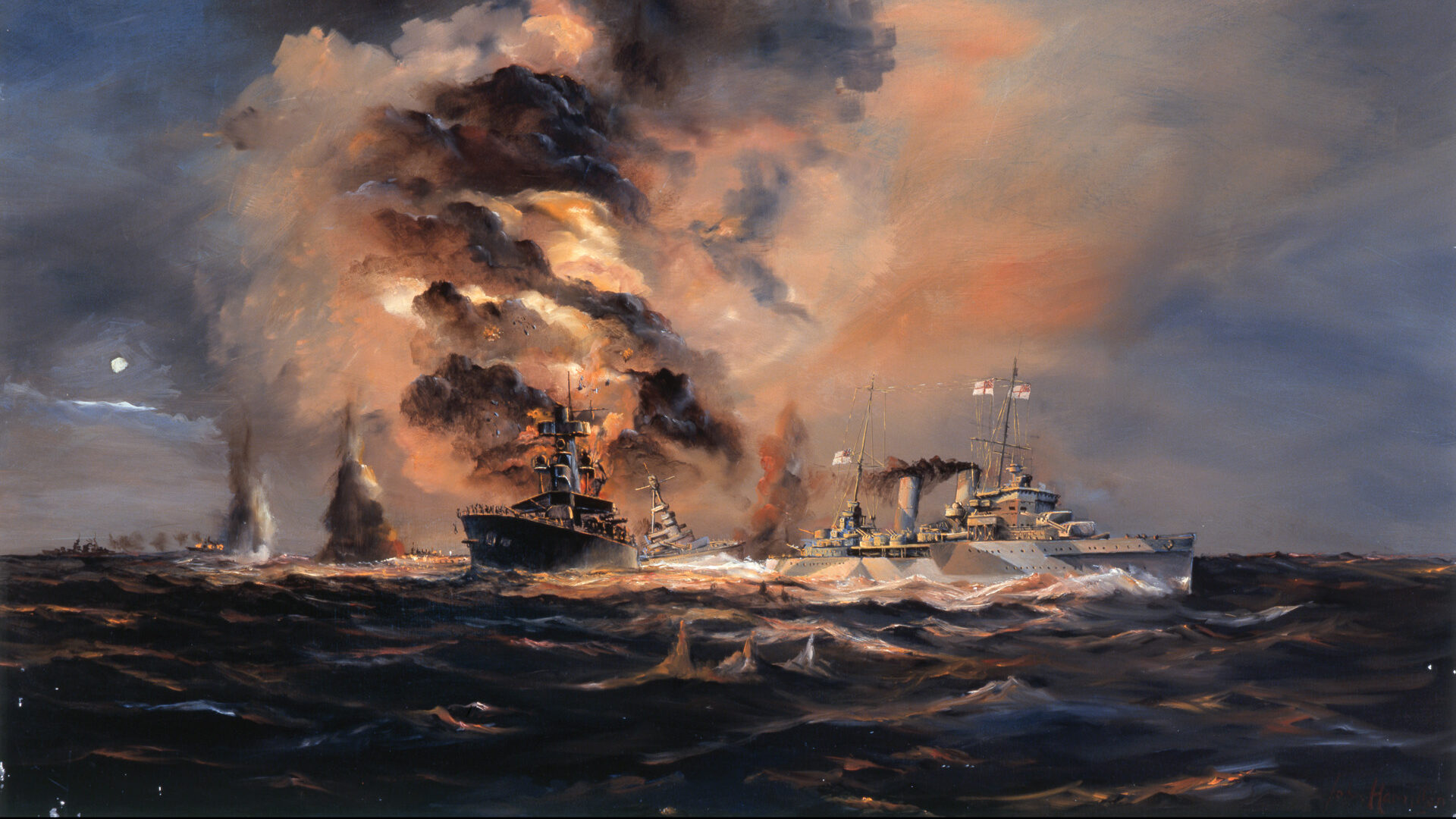
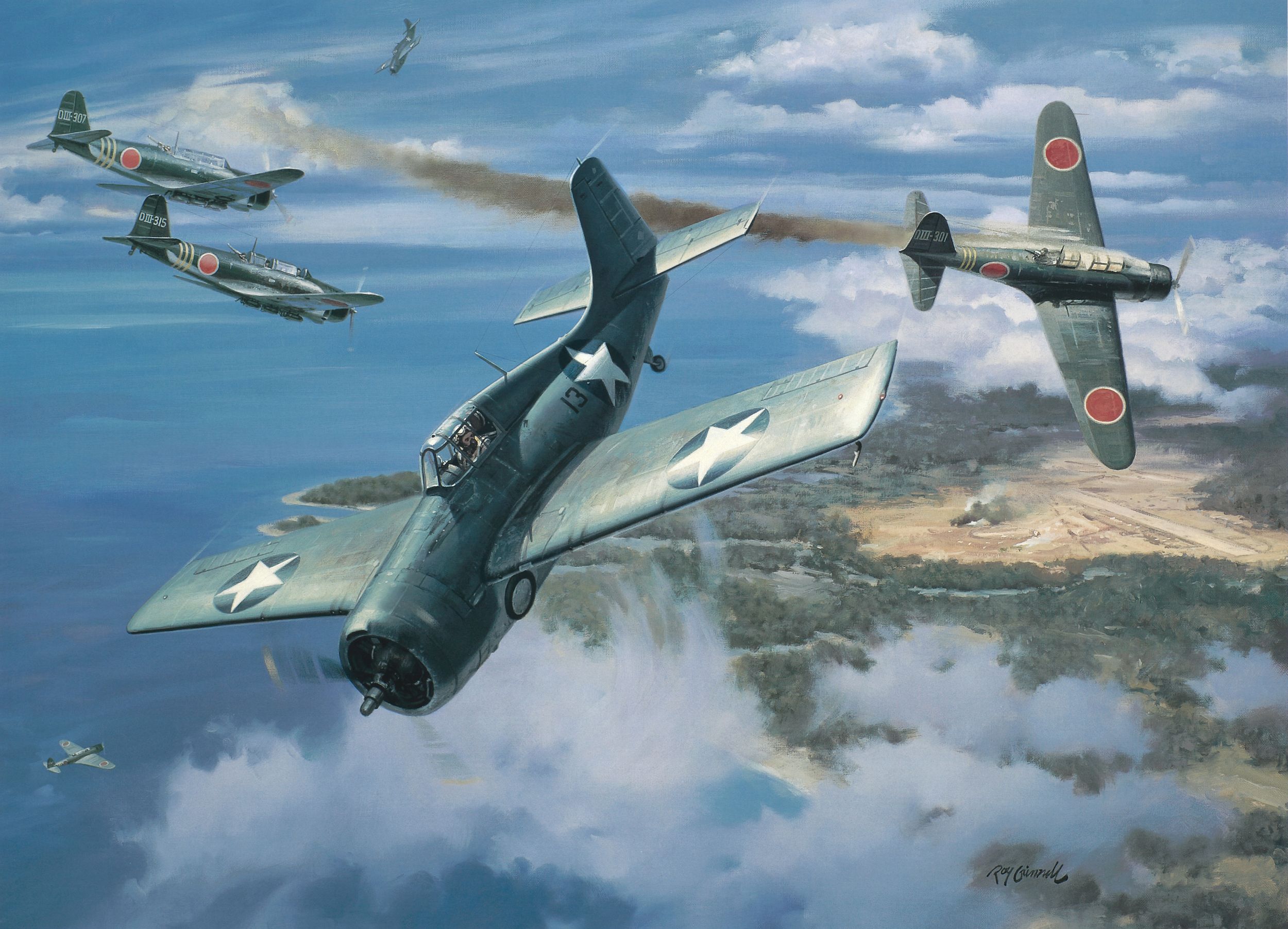
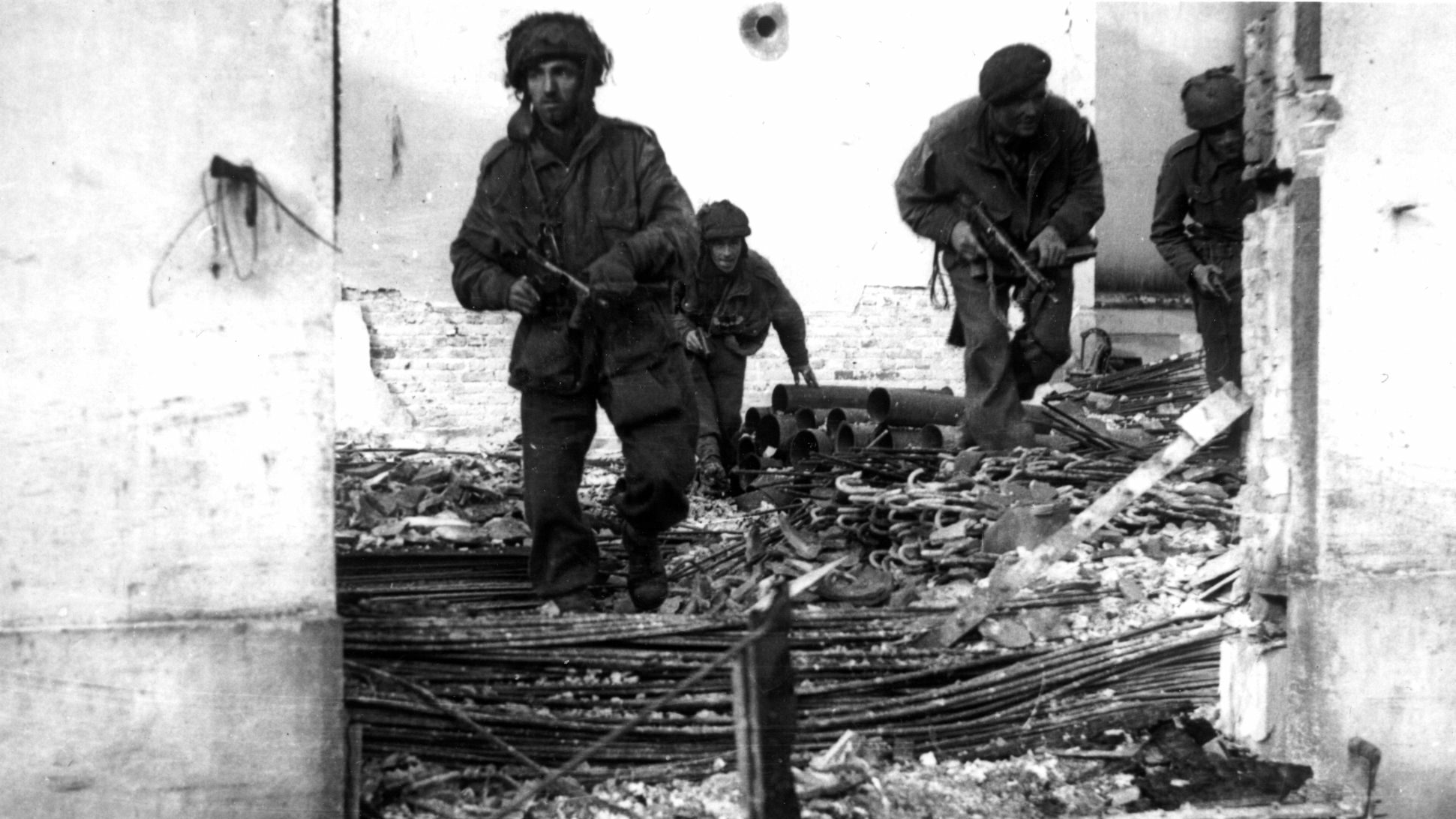
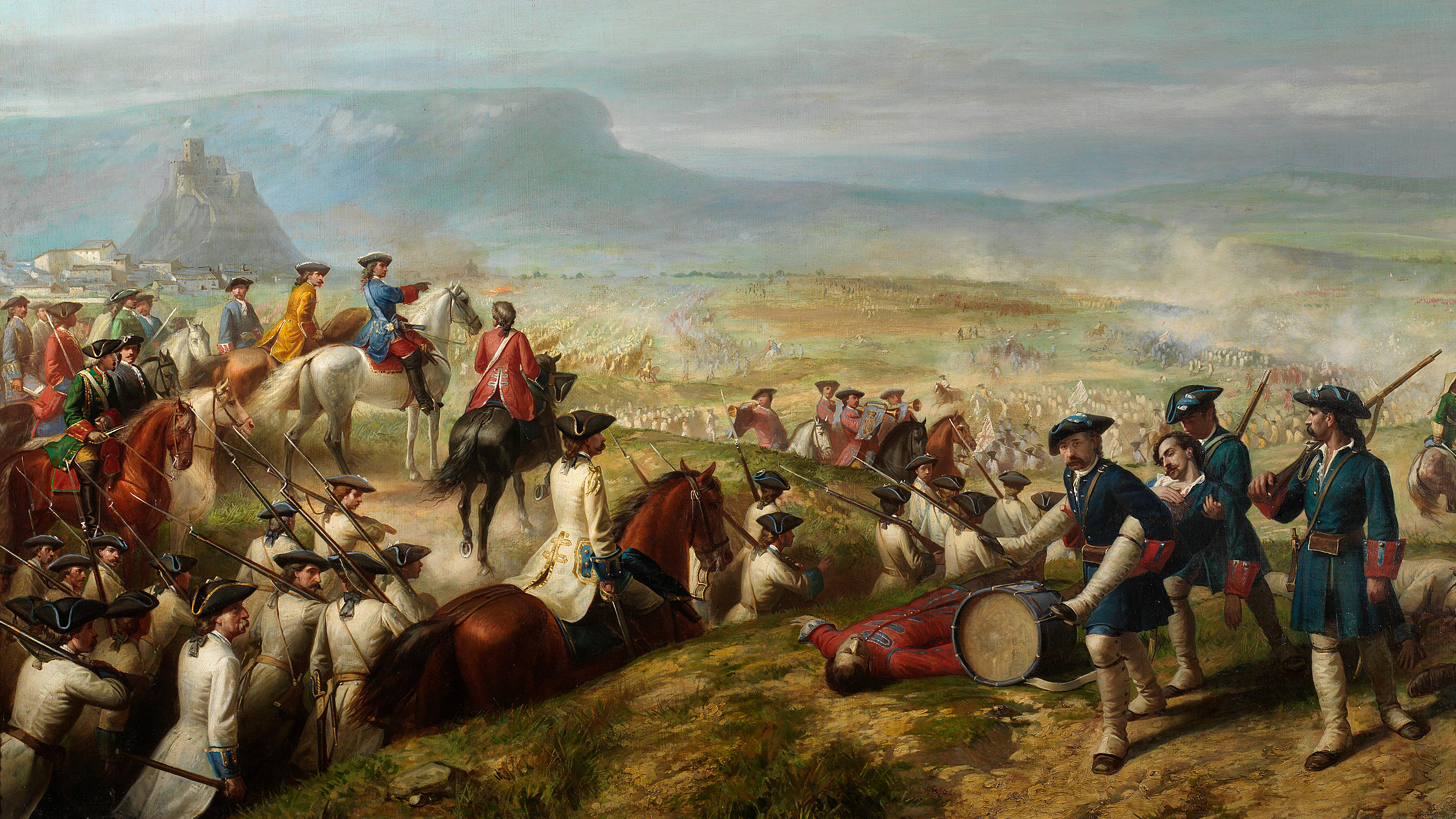
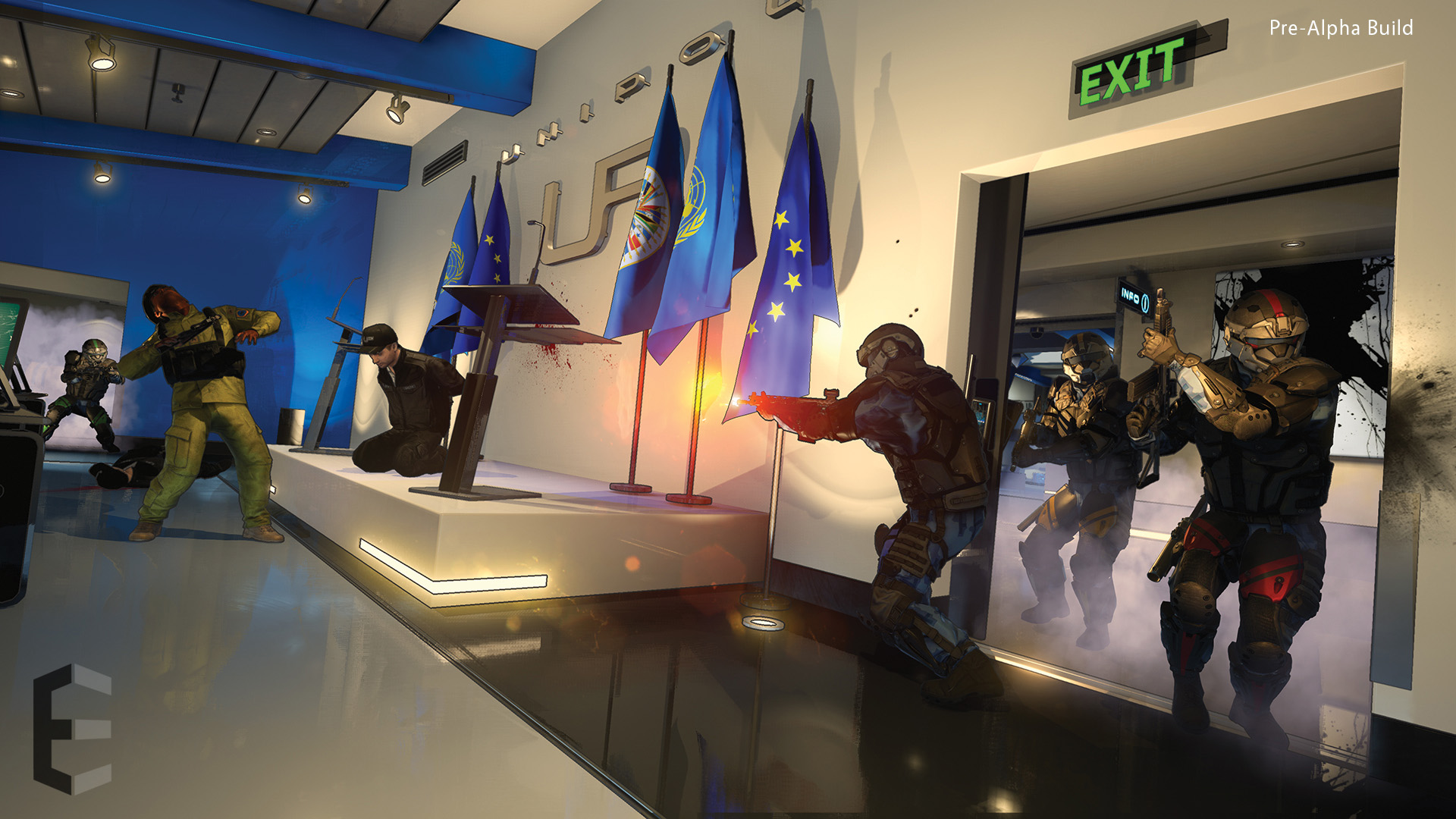
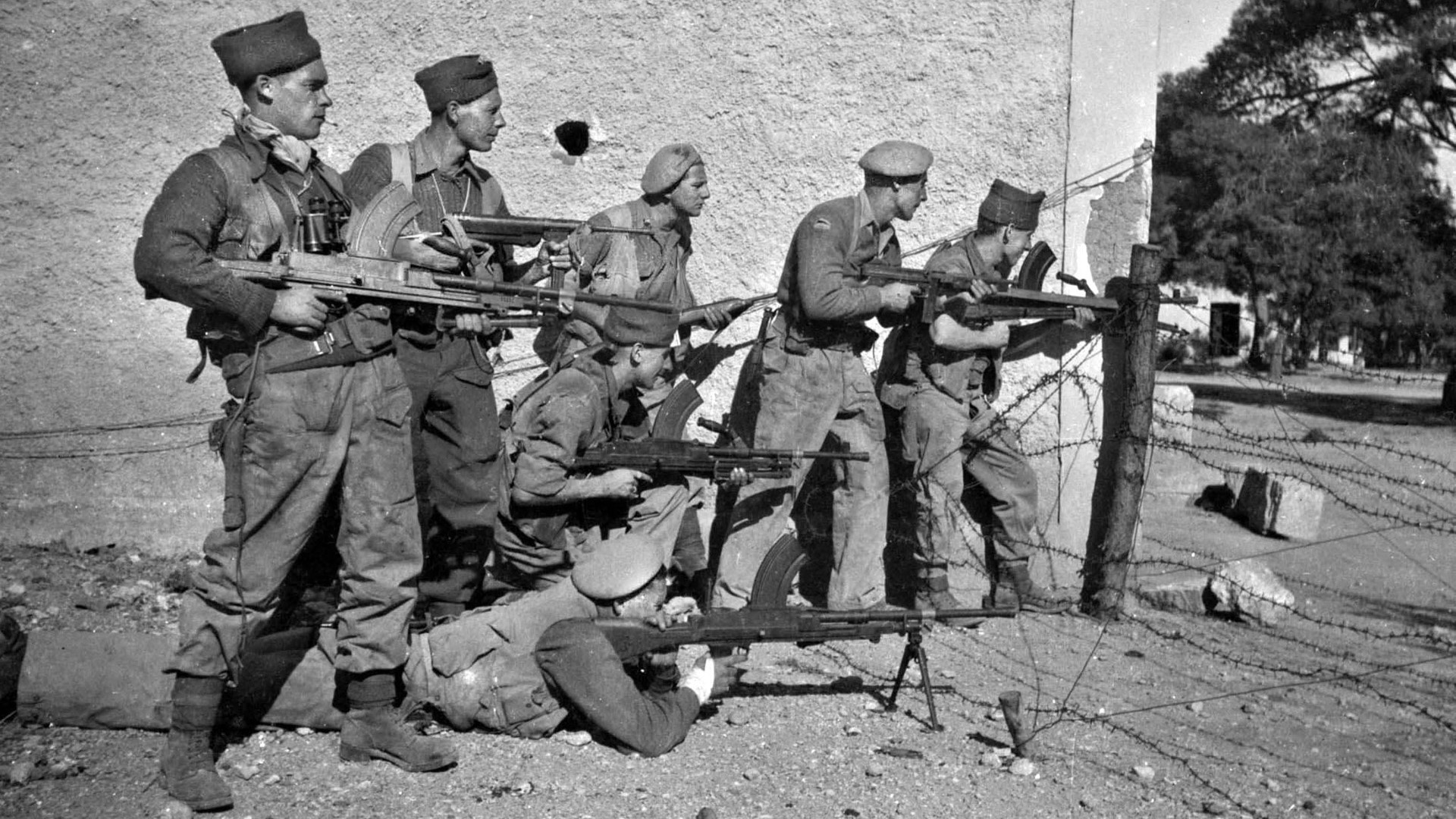
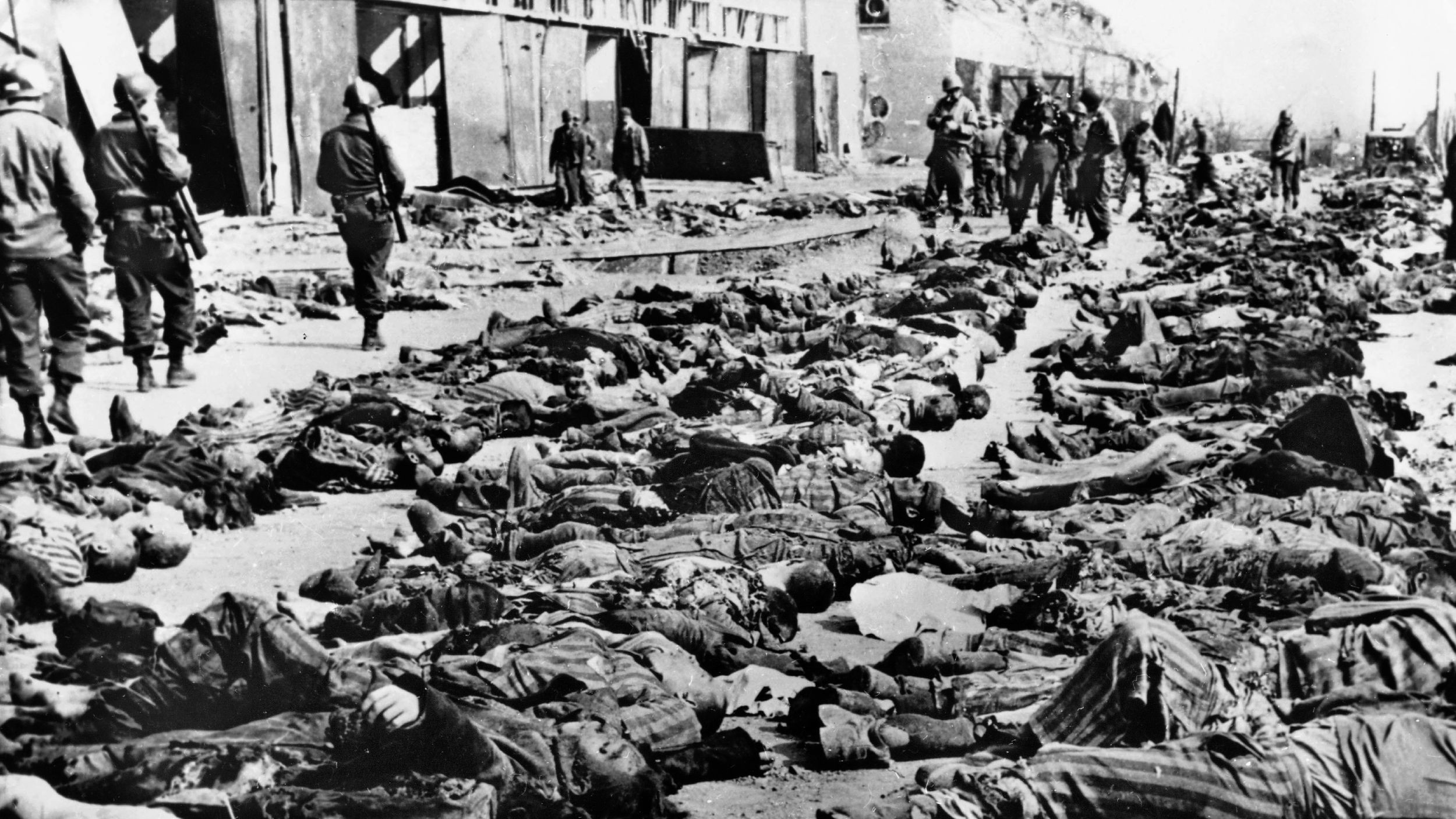
In the photo of a German Truck convoy on the mountain road to Derna in 1941, the tank in question is a British A10 known as the Cruiser Mk. II, not a German tank. This is probably a broken down abandoned tank as the turret is in the common facing rearwards traveling position. A pre-WWII design, this tank was only built in small numbers, 175, and most had been delivered by 1939. It saw some service in the Battle of France, North Africa, and also in the defense of Greece. It was originally intended as an infantry tank but was too lightly armored so it generally served as a cruiser tank although it was considered too slow for that purpose. It fought at the time when the Germans has the initiative and it was overwhelmed with other obsolescent and ill-conceived British and French tanks of the early war period.
I have serious reservations about the content of this article
1 There are no proofs for the allegations that the staff of the Regia Marina sabotaged the transport of supplies to NA.
2 It is not so that the NA campaign could be decisive for the outcome of the war .
3 That logistics were decisive for the outcome of the war in NA is unproved and an exaggeration .
4 The article totally neglects the role of the British forces ,it is as they did not exist .
5 Britain also had logistic problems,but won .Thus, Rommel did not lose because of the Italians .
I found this article as accurate as anything can be due to the historic facts or figures. Rommel was indeed a superior tactician, making more with less. British and commonwealth troops fought fiercely and did win but you have to remember the numerous British commanders failing over and over before Montgomery finally learnt from their mistakes and ultimately being victorious.
Interesting anaylsis of the North African campaign.
Mr. Dewolf makes pertinent points.
My slight difference is on British logistics. With the giant port of Alexandria and the untouchable Cape of Good Hope, plus the India-Egypt route, the British were substantially advantaged over the Germans in logistics.
Also, the British had probably a 5:1 or greater advantage on tanks, trucks, artillery etc. To support Mr. Dewolf, no matter how brilliant Rommel’s offensives, Rommel could not overcome the material disadvantage. Having 20-80 tanks left at the end of an offensive drive, when faced with British 8th Army’s 600-800 tanks, was no way to won anything even is Rommel had had sufficient POL/ammunition.
The loss of the 2nd German Air Fleet which was switched to Greece was a fatal blow, given the Desert Air Force had about 30 combat squadrons.
Knocking the British out of North Africa would not have helped Germany win the war, because on the Russian Front Germany was outnumbered 2:1 in divisions and somewhere around 7:1 in tanks.
Moreover, with the Americans moving into North Africa from the West – and they could easily have supported 8-10 large divisions which would have cut across Rommel’s real and led to Panzer Armee stranding and destruction.
So I think Mr. Dewolf is right on this point that Norther africas was a secondary theatre.